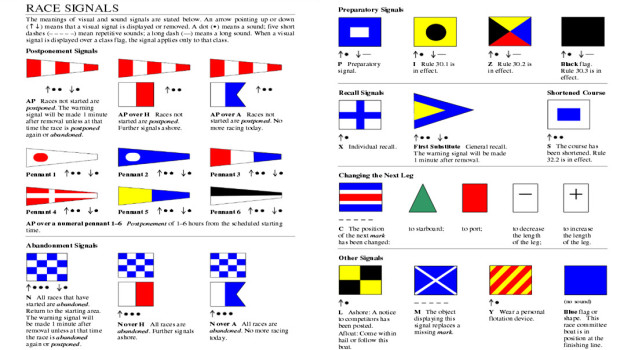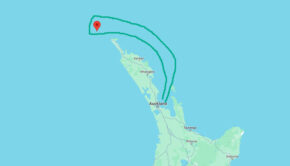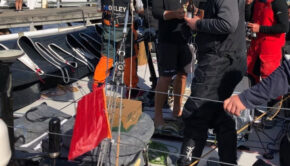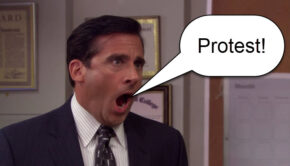Do the Race Signals work in the real world?
Published on September 25th, 2014
by Craig Leweck, Scuttlebutt
When I learned to sail as a junior, I was handed a copy of Royce’s Sailing Illustrated in my beginner class. This was the ‘sailor’s bible’ and it would stick with me through my teen years. That book taught me a lot of stuff, from splicing to knot tying to anything I needed to know in a boat. But if Royce’s taught code flags, I was absent that day.
It wasn’t until I was in my 2o’s and sailed with a graduate from the Naval Academy when I was with someone that spoke fluent ‘flagenese’. I was equal parts impressed and discouraged, as the only language I had thus far mastered was profanity. Now in my 50s, flagenese still mostly escapes me.
I’m not sure how many other people fully rely on a code flag chart to race; I hope I am not alone. It might not be too good a system if we all struggle with it. However, it comes with some comfort that the people operating the flags have their challenges too.
Mike Butterfield (GBR), who is an International Race Officer along with being an International Umpire and Jurists, finds the multi-flag system required by the Racing Rules of Sailing to be out of step with the equipment he finds on Race Committee boats. Here he comments:
I have always worked with the rule book to fulfill the requirements of the Postponement Signals (AP over H, AP over A, AP over numeral pennant) and Abandonment Signals (N over H, N over A). Similarly I have displayed signals over a class flag to designate how the signal applies to that fleet only in multi-fleet regattas.
But I now am having some difficulty with this system:
1. On yachts the fly is not long enough not display many flags, especially so they can be seen.
2. When using poles, as is very common now, there is no real height for many flags and they are hard, in an emergency (when they are often needed) to fit to the poles. Most flags are not made for this.
I note that in RRS 33, when changing the next leg of the course, we just have to display Flag C and the red or green colors on a course board. If there is no confusion here, why can we not do this for the other flags?
These signals are used when there is little else displayed so little chance of confusion. It solves the problem of the short fly and the fixing of two or more flags to a pole.
A solution is to change the language in the Racing Rules of Sailing. Currently the rules require that a multi-flag signal display one flag “over” the other. I would like to change the wording to “displaying with”.
Editor’s note: Please submit comments and/or solutions to this issue. I know as a competitor, there are plenty of times I have struggled to see flags because of their hoist location or wind direction.









 We’ll keep your information safe.
We’ll keep your information safe.